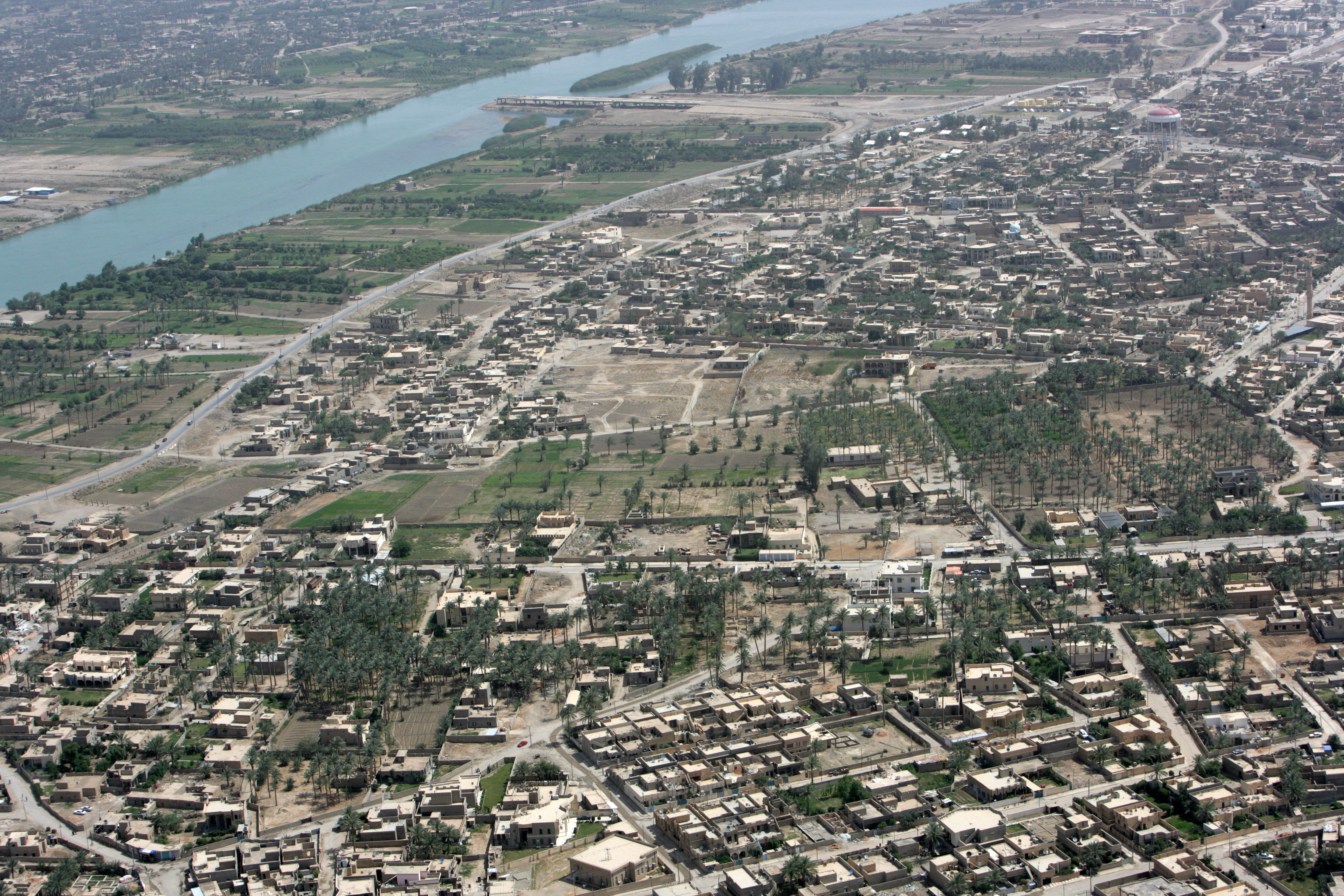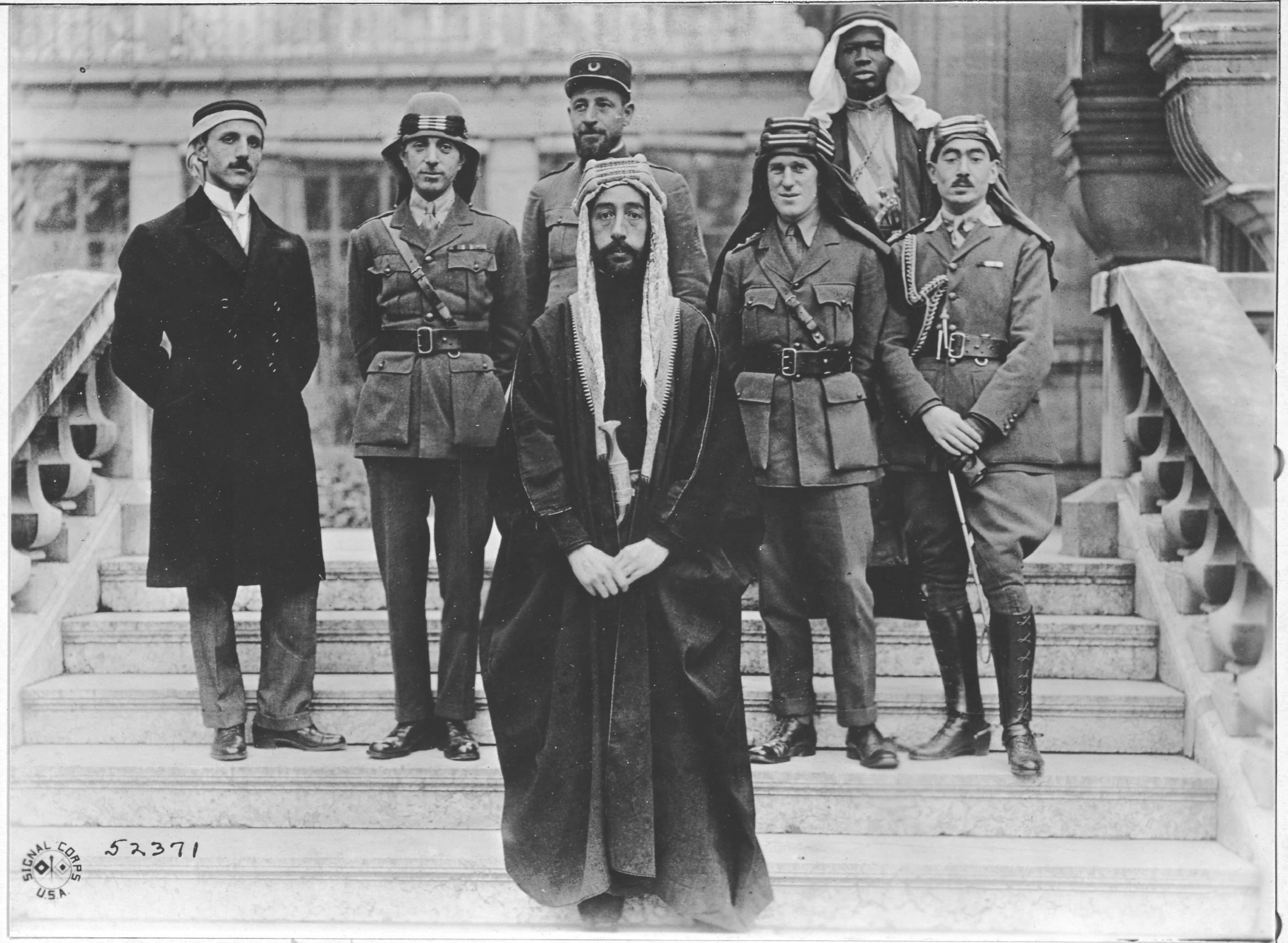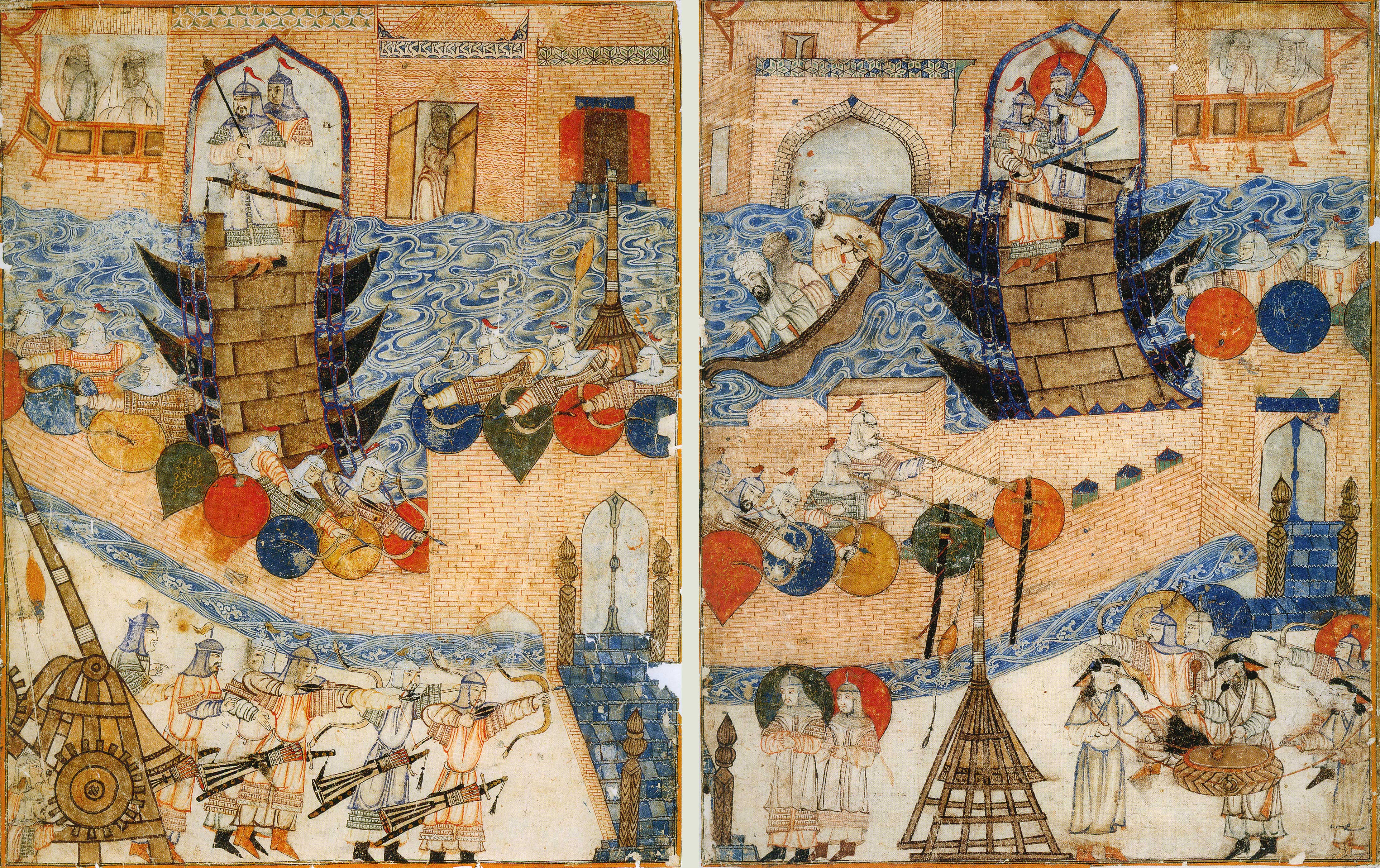|
Anbar Governorate
Al Anbar Governorate ( ar, محافظة الأنبار; ''muḥāfaẓat al-’Anbār''), or Anbar Province, is the largest governorate in Iraq by area. Encompassing much of the country's western territory, it shares borders with Syria, Jordan, and Saudi Arabia. The population is mostly Sunni Muslims. The provincial capital is Ramadi; other important cities include Fallujah and Al-Qa'im. The governorate was known as Ramadi up to 1976 when it was renamed Al Anbar Province, and it was known as Dulaim before 1962. A large majority of the inhabitants of the province are Sunni Muslims and most belong to the Dulaim tribe, all of which speak Arabic. In early 2014, the Islamic State, with the assistance of some local Sunni militias, launched a successful campaign to seize control of the province from the Iraqi government. Numerous offensive actions were undertaken by the Iraqi government, with the assistance of local Sunni tribes to remove ISIL's occupation of the province, especi ... [...More Info...] [...Related Items...] OR: [Wikipedia] [Google] [Baidu] |
Governorates Of Iraq
Iraq consists of 19 governorates ( ar, محافظة, muḥāfażah; ckb, پارێزگا , parêzgeh), also known as "provinces". Per the Iraqi constitution, governorates can form an autonomous region. Four governorates, Erbil, Sulaymaniyah, Duhok, and Halabja, constitute the autonomous Kurdistan Region. Baghdad (which is the most populous) and Basra are the oldest standing provinces of Iraq. The second most-populous province, Ninawa (also called Nineveh) is in the upland and quite cool climate of the north-west. Through early 2014, the Council of Ministers of the government of Iraq approved proposals to add the three newest governorates: *Tal Afar, from part of Ninawa Governorate *Tuz Khurmatu, from part of Saladin Governorate *Halabja from part of the Sulaymaniyah Governorate. Another proposal exists to add a 20th: Fallujah, from the relevant part of the Al Anbar. This largely did not occur due to the ISIS insurgency. Following the defeat of ISIS in the Battle of Fal ... [...More Info...] [...Related Items...] OR: [Wikipedia] [Google] [Baidu] |
2017 Western Iraq Campaign
The 2017 Western Iraq campaign was the final major military operation of the 2013–2017 war in Iraq, in the western province of Anbar, and on the border with Syria, with the goal of completely expelling ISIL forces from their last strongholds in Iraq. The offensive followed the Hawija offensive by the Iraqi Government, and was also concurrent with several major offensives in Syria: the Syrian Democratic Forces' Deir ez-Zor offensive, and the Syrian Government's Battle of Deir ez-Zor and Eastern Syria campaign on the opposite side of the Al-Qa'im border crossing. Background Al-Qa'im was known as a hotbed of jihadist insurgency, after the 2003 invasion of Iraq, with coalition forces carrying out repeated operations against Al-Qaeda jihadists. The strategic and porous border started becoming a route for foreign fighters entering Iraq from Syria, who was accused by Iraqi Government of ignoring it. The towns of western Anbar were captured by the Islamic State of Iraq and ... [...More Info...] [...Related Items...] OR: [Wikipedia] [Google] [Baidu] |
Faisal I Of Iraq
Faisal I bin Al-Hussein bin Ali Al-Hashemi ( ar, فيصل الأول بن الحسين بن علي الهاشمي, ''Faysal el-Evvel bin al-Ḥusayn bin Alī el-Hâşimî''; 20 May 1885 – 8 September 1933) was King of the Arab Kingdom of Syria or Greater Syria in 1920, and was King of Iraq from 23 August 1921 until his death. He was the third son of Hussein bin Ali, the Grand Emir and Sharif of Mecca, who was proclaimed as King of the Arabs in June 1916. He was a 38th-generation direct descendant of Muhammad, as he belonged to the Hashemite family. Faisal fostered unity between Sunni and Shiite Muslims to encourage common loyalty and promote pan-Arabism in the goal of creating an Arab state that would include Iraq, Syria and the rest of the Fertile Crescent. While in power, Faisal tried to diversify his administration by including different ethnic and religious groups in offices. However, Faisal's attempt at pan-Arab nationalism possibly contributed to the isolation of ce ... [...More Info...] [...Related Items...] OR: [Wikipedia] [Google] [Baidu] |
Ottoman Iraq
Ottoman Iraq ( ar, العراق العثماني}) refers to the period of the history of Iraq when the region was ruled by the Ottoman Empire (1534–1920; with an interlude from 1704 to 1831 of autonomy under the Mamluk dynasty of Iraq).Before reforms (1534–1704), Iraq was divided into four Eyalets (provinces): * Baghdad Eyalet * Shahrizor Eyalet * Basra Eyalet * Mosul Eyalet Ottoman Iraq was later (1831–1920) divided into the three vilayets (provinces): * Mosul Vilayet * Baghdad Vilayet * Basra Vilayet During World War I, an invasion of the region was undertaken by British Empire forces and was known as the Mesopotamian campaign. Fighting commenced with the Battle of Basra in 1914 and continued for the duration of the war. The most notable action was the siege of Kut, which resulted in the surrender of the British and British Indian Army garrison of the town in April 1916, after a siege of 147 days. Contemporary maps, showing eyalets (pre Tanzimat reforms) Contempo ... [...More Info...] [...Related Items...] OR: [Wikipedia] [Google] [Baidu] |
Aramaic
The Aramaic languages, short Aramaic ( syc, ܐܪܡܝܐ, Arāmāyā; oar, 𐤀𐤓𐤌𐤉𐤀; arc, 𐡀𐡓𐡌𐡉𐡀; tmr, אֲרָמִית), are a language family containing many varieties (languages and dialects) that originated in the ancient region of Syria. For over three thousand years, It is a sub-group of the Semitic languages. Aramaic varieties served as a language of public life and administration of ancient kingdoms and empires and also as a language of divine worship and religious study. Several modern varieties, namely the Neo-Aramaic languages, are still spoken in the present-day. The Aramaic languages belong to the Northwest group of the Semitic language family, which also includes the Canaanite languages such as Hebrew, Edomite, Moabite, and Phoenician, as well as Amorite and Ugaritic. Aramaic languages are written in the Aramaic alphabet, a descendant of the Phoenician alphabet, and the most prominent alphabet variant is the Syriac alphabet. The ... [...More Info...] [...Related Items...] OR: [Wikipedia] [Google] [Baidu] |
Sasanian
The Sasanian () or Sassanid Empire, officially known as the Empire of Iranians (, ) and also referred to by historians as the Neo-Persian Empire, was the last Iranian empire before the early Muslim conquests of the 7th-8th centuries AD. Named after the House of Sasan, it endured for over four centuries, from 224 to 651 AD, making it the longest-lived Persian imperial dynasty. The Sasanian Empire succeeded the Parthian Empire, and re-established the Persians as a major power in late antiquity alongside its neighbouring arch-rival, the Roman Empire (after 395 the Byzantine Empire).Norman A. Stillman ''The Jews of Arab Lands'' pp 22 Jewish Publication Society, 1979 International Congress of Byzantine Studies ''Proceedings of the 21st International Congress of Byzantine Studies, London, 21–26 August 2006, Volumes 1–3'' pp 29. Ashgate Pub Co, 2006 The empire was founded by Ardashir I, an Iranian ruler who rose to power as Parthia weakened from internal strife and wars with th ... [...More Info...] [...Related Items...] OR: [Wikipedia] [Google] [Baidu] |
Grain
A grain is a small, hard, dry fruit (caryopsis) – with or without an attached hull layer – harvested for human or animal consumption. A grain crop is a grain-producing plant. The two main types of commercial grain crops are cereals and legumes. After being harvested, dry grains are more durable than other staple foods, such as starchy fruits (plantains, breadfruit, etc.) and tubers ( sweet potatoes, cassava, and more). This durability has made grains well suited to industrial agriculture, since they can be mechanically harvested, transported by rail or ship, stored for long periods in silos, and milled for flour or pressed for oil. Thus, the grain market is a major global commodity market that includes crops such as maize, rice, soybeans, wheat and other grains. Grains and cereal Grains and cereal are synonymous with caryopses, the fruits of the grass family. In agronomy and commerce, seeds or fruits from other plant families are called grains if they resemble c ... [...More Info...] [...Related Items...] OR: [Wikipedia] [Google] [Baidu] |
Granary
A granary is a storehouse or room in a barn for threshed grain or animal feed. Ancient or primitive granaries are most often made of pottery. Granaries are often built above the ground to keep the stored food away from mice and other animals and from floods. Early origins From ancient times grain has been stored in bulk. The oldest granaries yet found date back to 9500 BC and are located in the Pre-Pottery Neolithic A settlements in the Jordan Valley. The first were located in places between other buildings. However beginning around 8500 BC, they were moved inside houses, and by 7500 BC storage occurred in special rooms. The first granaries measured 3 x 3 m on the outside and had suspended floors that protected the grain from rodents and insects and provided air circulation. These granaries are followed by those in Mehrgarh in the Indus Valley from 6000 BC. The ancient Egyptians made a practice of preserving grain in years of plenty against years of scarcity. The clima ... [...More Info...] [...Related Items...] OR: [Wikipedia] [Google] [Baidu] |
Mongol Invasion Of Iraq
The siege of Baghdad was a siege that took place in Baghdad in 1258, lasting for 13 days from January 29, 1258 until February 10, 1258. The siege, laid by Ilkhanate Mongol forces and allied troops, involved the investment, capture, and sack of Baghdad, which was the capital of the Abbasid Caliphate at that time. The Mongols were under the command of Hulagu Khan, brother of the khagan Möngke Khan, who had intended to further extend his rule into Mesopotamia but not to directly overthrow the Caliphate. Möngke, however, had instructed Hulagu to attack Baghdad if the Caliph Al-Musta'sim refused Mongol demands for his continued submission to the khagan and the payment of tribute in the form of military support for Mongol forces in Persia. Hulagu began his campaign in Persia against the strongholds of Nizari Ismailis, who lost their stronghold of Alamut. He then marched on Baghdad, demanding that Al-Musta'sim accede to the terms imposed by Möngke on the Abbasids. Although the Abba ... [...More Info...] [...Related Items...] OR: [Wikipedia] [Google] [Baidu] |
Muntherids
The Lakhmids ( ar, اللخميون, translit=al-Laḫmiyyūn) referred to in Arabic as al-Manādhirah (, romanized as: ) or Banu Lakhm (, romanized as: ) was an Arab kingdom in Southern Iraq and Eastern Arabia, with al-Hirah as their capital, from about 300 to 602 CE. They were generally but intermittently the allies and clients of the Sasanian Empire, and participant in the Roman–Persian Wars. While the term "Lakhmids" has also been applied to the ruling dynasty, more recent scholarship prefers to refer to the latter as the Naṣrids. The Nasrid dynasty authority extended over to their Arab allies in Al-Bahrain and Al-Yamama. When Khosrow II deposed and executed Al-Nu'man III, the last Nasrid ruler, his Arab allies in Najd rose in arms and defeated the Sasanians at the battle of Dhi Qar, which led to the Sasanians losing their control over Eastern Arabia. The victory at Dhi Qar roused confidence and enthusiasm among the Arabs seen as the beginning of a new era. Coupled w ... [...More Info...] [...Related Items...] OR: [Wikipedia] [Google] [Baidu] |
Saqlawiyah
As Saqlāwīyah ( ar, الصقلاوية, aṣ-Ṣaqlāwīyah) is a city in Al Anbar Governorate, in central Iraq. It is located roughly 5 miles (8 km) northwest of the city of Fallujah. Saqlawiyah is a rural city in between Habbaniyah and Fallujah that sits on the major freeway. The city was named after an Arabian Mare of the Saqlawiyah strain of the Shammar Zawba clan. Due to the canal network that runs through the area, agriculture is an import identity to Saqlawiyans. Due to its proximity to the major freeway, there are many shops along the road that cater to the transient crowds. ISIL control and recapture Saqlawiyah came under ISIL control in September 2014 during the Siege of Saqlawiyah, as several hundred Iraqi soldiers were killed. In 2016, during the Siege of Fallujah and Operation Breaking Terrorism, there was intense fighting in the area between the Iraqi army and ISIL militants. On 29 May, Iraqi troops seized a key bridge between nearby village of Zaghareed and Saql ... [...More Info...] [...Related Items...] OR: [Wikipedia] [Google] [Baidu] |




